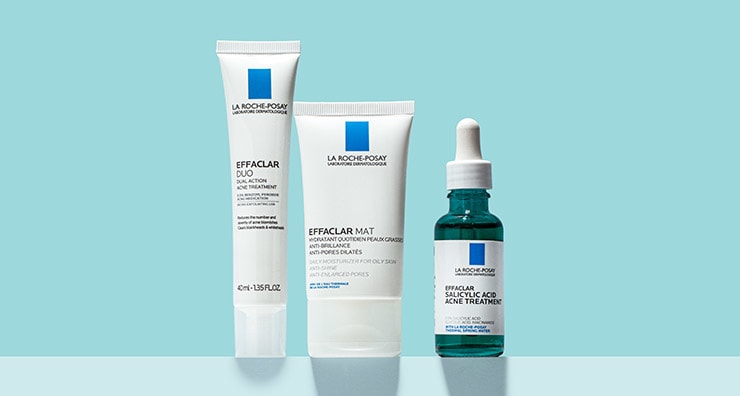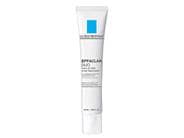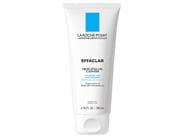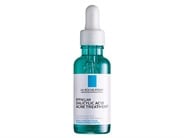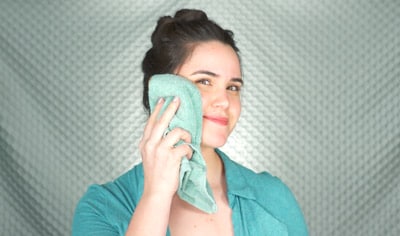Skin Care
How to identify your acne and treat it with La Roche-Posay Effaclar
by Aaron|September 27, 2022
To fight stubborn acne and help you get on the path to clearer skin, French skin care brand La Roche-Posay created the Effaclar line. Before you jump into an acne care regimen, though, it’s a good idea to learn how to identify your acne type. After you have a handle on how to identify different types of acne, you can be confident in effectively treating it at home or with the help of your dermatologist. Ready to find out what different types of acne you can treat with La Roche-Posay’s Effaclar line? Follow along as we answer questions such as:
Acne—called acne vulgaris in the dermatologist’s office—occurs when the pores in your skin become clogged with dead skin cells, oil and dirt. It can pop up on your skin in the form of whiteheads, blackheads and pimples.
How can you tell the difference between different types of acne and how do you identify your acne type? Here’s a quick primer of what’s what and how to identify acne:
Whiteheads: A closed clogged pore is called a whitehead. Whiteheads are tiny white or flesh-colored bumps that appear raised off of your skin.
Blackheads: An open clogged pore is called a blackhead. Often flatter than whiteheads, blackheads look like tiny holes in the skin and can range in color from dark gray to black.
Pimples: The small, swollen pink or red bumps that we colloquially call pimples actually fall into two clinical categories. If the red or pink bump has a pus-filled tip, it’s called a pustule. A red or pink bump without pus is called a papule/_blank ). Both types of pimples are typically tender to the touch.
La Roche-Posay created its Effaclar line to help treat mild to moderate acne in the form of whiteheads, blackheads and pimples. Active ingredients such as salicylic acid and benzoyl peroxide are intended to help treat existing acne while also helping prevent future breakouts from popping up. Check out these three steps to help address your acne with La Roche-Posay Effaclar.
1) Cleanse
The first step to treat different types of acne such as blackheads, whiteheads and pimples is cleansing your skin with a medicated cleanser specifically formulated to treat acne. La Roche-Posay Effaclar Medicated Gel Cleanser is designed to help clear existing acne with 2% salicylic acid and lipo-hydroxy acid. These key ingredients also help reduce excess oil on the surface of your skin to help prevent clogged pores that can lead to future breakouts. It also contains glycerin, an effective hydrating ingredient that helps counteract the drying effect of salicylic acid.
2) Moisturize
Applying a moisturizer that’s specifically formulated for acne-prone skin is a crucial step in your acne treatment regimen. “Some of my acne-prone patients assume that moisturizing their skin could cause more breakouts, but it actually depends entirely on your skin type,” says board-certified dermatologist and LovelySkin CEO Dr. Joel Schlessinger. “If acne-prone skin is lacking moisture, it can respond by creating more oil, which then can actually further aggravate acne.” La Roche-Posay Effaclar MAT Oil-Free Mattifying Moisturizer helps provide balanced moisture for acne-prone skin with thermal spring water and glycerin as well as mattifying ingredients such as perlite and silica to help absorb oil throughout the day. It also contains salicylic acid and lipo-hydroxy acid to help clear and refine the look of pores, so they don’t become clogged, resulting in more breakouts.
3) Treat
The final step in addressing your acne is to apply a targeted acne treatment. The La Roche-Posay Effaclar line has several different options for you to try.
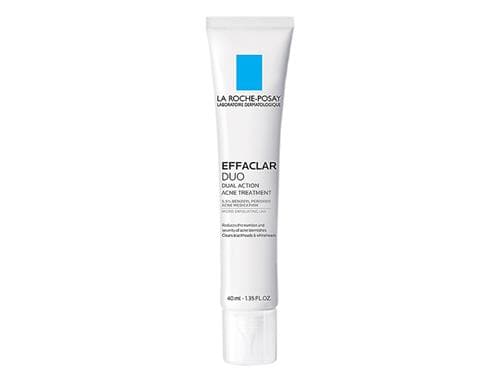
This product is La Roche-Posay’s best spot treatment to reduce the number and severity of blackheads, whiteheads and pimples. It contains lipo-hydroxy acid to help exfoliate skin and clear away dead skin cells that can clog pores and lead to acne. It also has 5.5% benzoyl peroxide in a micronized form to deeply penetrate into your pores, which makes it especially effective when it comes to treating red, raised pimples (either papules or pustules). Clinical trials showed that this spot treatment can visibly improve the appearance of acne with three days of use and reduce 60% of acne in ten days.
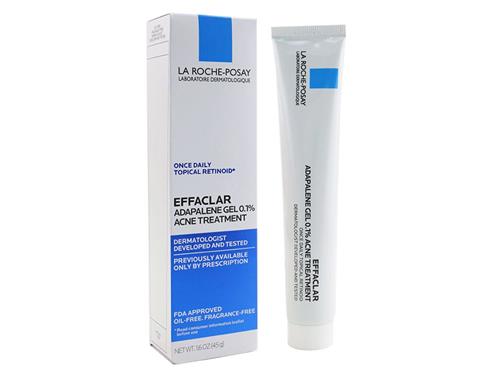
Another option from the Effaclar line formulated to treat blackheads, whiteheads and raised red pimples is this fast-absorbing gel, which can be used all over or as a spot treatment. The key ingredient is 0.1% adapalene, a prescription-strength retinoid available over the counter. “Adapalene is a newer topical retinoid,” Dr. Schlessinger says. “It does a great job improving the appearance of acne and reducing post-acne scarring with less skin irritation as a side effect.”

If you’d like to improve post-acne marks, enlarged pores and uneven skin tone while also treating whiteheads, blackheads and pimples, this facial serum is a great choice to add to your acne treatment regimen. It contains salicylic acid, glycolic acid and lipo-hydroxy acid, which work together to exfoliate the skin and reduce clogged pores. In clinical trials, users reported a 49% improvement in post-acne marks in four weeks and 77% of users said their pores appeared less visible in two weeks.
Now that you know how to identify different types of acne, you can learn more about how you can address acne and wrinkles at the same time with products from La Roche-Posay.


